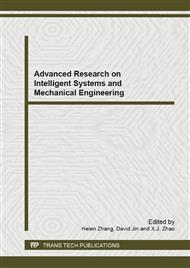p.326
p.333
p.337
p.341
p.346
p.353
p.358
p.362
p.366
Wind Turbine Generator Fault Detection by Wavelet-Based Multifractal Analysis
Abstract:
It is difficult to obtain the obvious fault features of wind turbine, because the vibration signal of them are non-linear and non-stationary. To solve the problem, a multifractal analysis based on wavelet is presented in this research. The real signals of 1.5 MW wind turbine are studied by multifractal theory. The incipient fault features are extracted from the original signal. Using the Wavelet Transform Modulo Maxima Method, the multifractal was obtained. The results show that fault features of high rotational frequency of wind turbine are different from low rotational frequency, and the complexity of the vibration signals increases with the rotational frequency. These demonstrate the multifractal analysis is effective to extract the fault features of wind turbine generator.
Info:
Periodical:
Pages:
346-349
Citation:
Online since:
January 2013
Authors:
Keywords:
Price:
Сopyright:
© 2013 Trans Tech Publications Ltd. All Rights Reserved
Share:
Citation:


